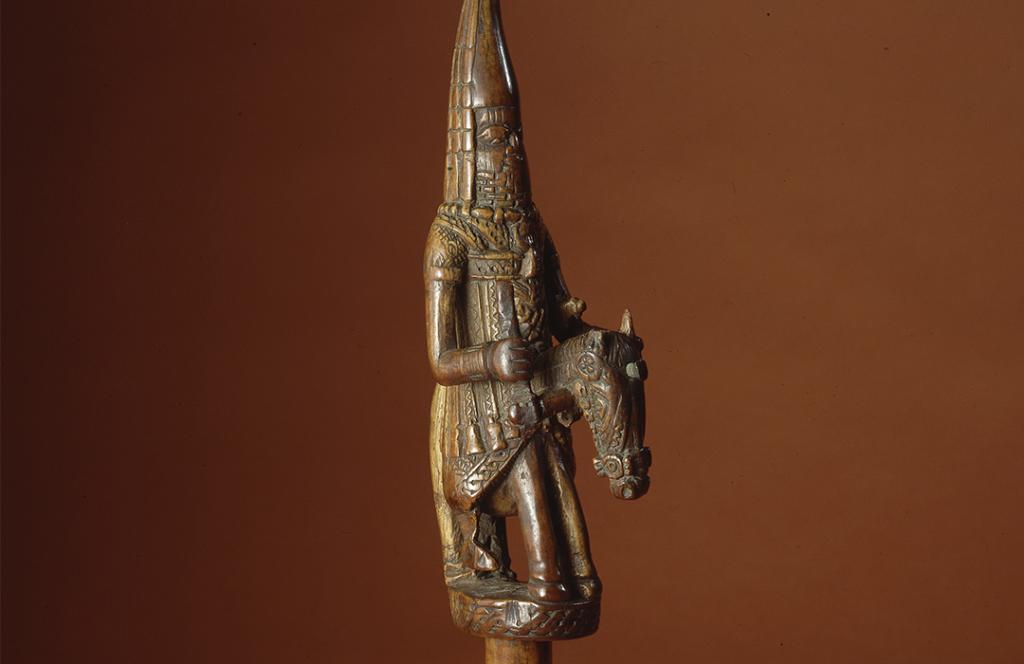How have objects come to be in museums? (updated)
In March, MA Art Gallery and Museum Studies student at the University of Manchester, Asha Hall-Jones, launched a new social media platform to inspire conversation about looted objects in museums. Read about her experience and updated reflection below.

Looted Objects – An introduction (March 2021)
Museums around the country are being asked to reflect on where the objects they hold came from. The term ‘looted objects’ refers to artworks that were taken through dishonestly, force or stealth. In other words, works that were stolen from a place or person. Many British museums have looted objects in their collections due to Britain’s colonial past. For example, in 1897 British soldiers invaded Benin City in modern day Nigeria and looted thousands of artifacts known as the Benin Bronzes. These artifacts are now scattered across the world, many of them located in British museums. This is just one example of how looted objects have ended up in British museums.
"Many British museums have looted objects in their collections due to Britain’s colonial past."
Over the past few years there has been increased media coverage on these issues. In 2020 Radio 4 released a podcast series called Museum of Lost Objects which traces the histories of antiquities and landmarks that have been destroyed or looted. The debate was even reflected in the 2018 Marvel film Blank Panther during a poignant scene set in the fictional ‘Museum of Great Britain’. As the debate has seeped into popular culture, more people have become aware of the violent history behind some of the most well-known collections in British museums.
In response to this, many museums and heritage sites are striving to reinterpret their colonial collections and the looted artworks that they contain, widening participation along the way. As museums strive to reframe displays and build inclusive spaces, it is essential that audiences are given the opportunity to contribute their thoughts on these topics.
As an MA Art Gallery and Museum Studies student at the University of Manchester, I’m currently completing a work placement at World Museum’s World Cultures Gallery. Here, I’ll be using social media to gather insights into what people think about the presence of looted artworks in museum displays. Starting by creating a new Twitter account, Looted Objects (@lootedobjects), I will be sharing relevant resources and quotes, which I hope will act as a springboard for discussion during the Spring of 2021. The discussions that unfold will be archived and ultimately made available for public access at World Museum, Liverpool.
"The debate was even reflected in the 2018 Marvel film Blank Panther during a poignant scene set in the fictional ‘Museum of Great Britain’."
I hope this project will help create awareness about how many museum objects are in fact looted and inspire discussion not only in the museum sector but across the city and beyond. As public spaces, I believe everyone should be able to contribute ideas about how objects are displayed in museums and that museums themselves should be willing to engage and listen. This way they can continue to work towards becoming spaces that truly serve and enhance their communities and the wider world.
I am excited to run this account for the next couple of months and I really look forward to hearing what everyone has to say. Follow @lootedobjects on Twitter, check out the resources that are already on there and feel free to share any thoughts you may have. Let’s talk!
Looted Objects – A Reflection (July 2021)
Over the last few months, there has been an eruption of stories on the topic of looted objects in museums. Aside from the media coverage, the book Loot: Britain and the Benin Bronzes by Barnaby Philips was published, exploring the story of the Benin Bronzes. I had the pleasure of attending the launch, where the speakers discussed how the restitution of looted objects could work to build long lasting connections between museums across the world. Instead of being seen as something that strips museums of their objects, restitution instead can be understood as a process which encourages fair and equal loaning of objects between institutions. This sentiment was echoed in a Radical Hope talk run by the Pitt Rivers Museum. Here, speakers discussed how restitution can provide a space for education, relationship building and healing.
"Instead of being seen as something that strips museums of their objects, restitution instead can be understood as a process which encourages fair and equal loaning of objects between institutions."
I’m grateful to have been part of the conversation at such a pinnacle time. Seeing the issue of looted objects discussed time and again in the media, provided plenty of stories to share with my growing number of followers and reaffirmed the importance of the issue. Despite the tight time frame, I had a positive response, showing the great power of social media to facilitate debates, even over complex topics. Twitter allows people from all walks of life to participate in the conversation and I got a strong sense that people from both inside and outside of the museum sector were interested in learning more.
After a short break, Looted Objects will continue as a personal project, with the aim to bring more diverse voices to the discussion of repatriation and restitution of looted objects in museums.
